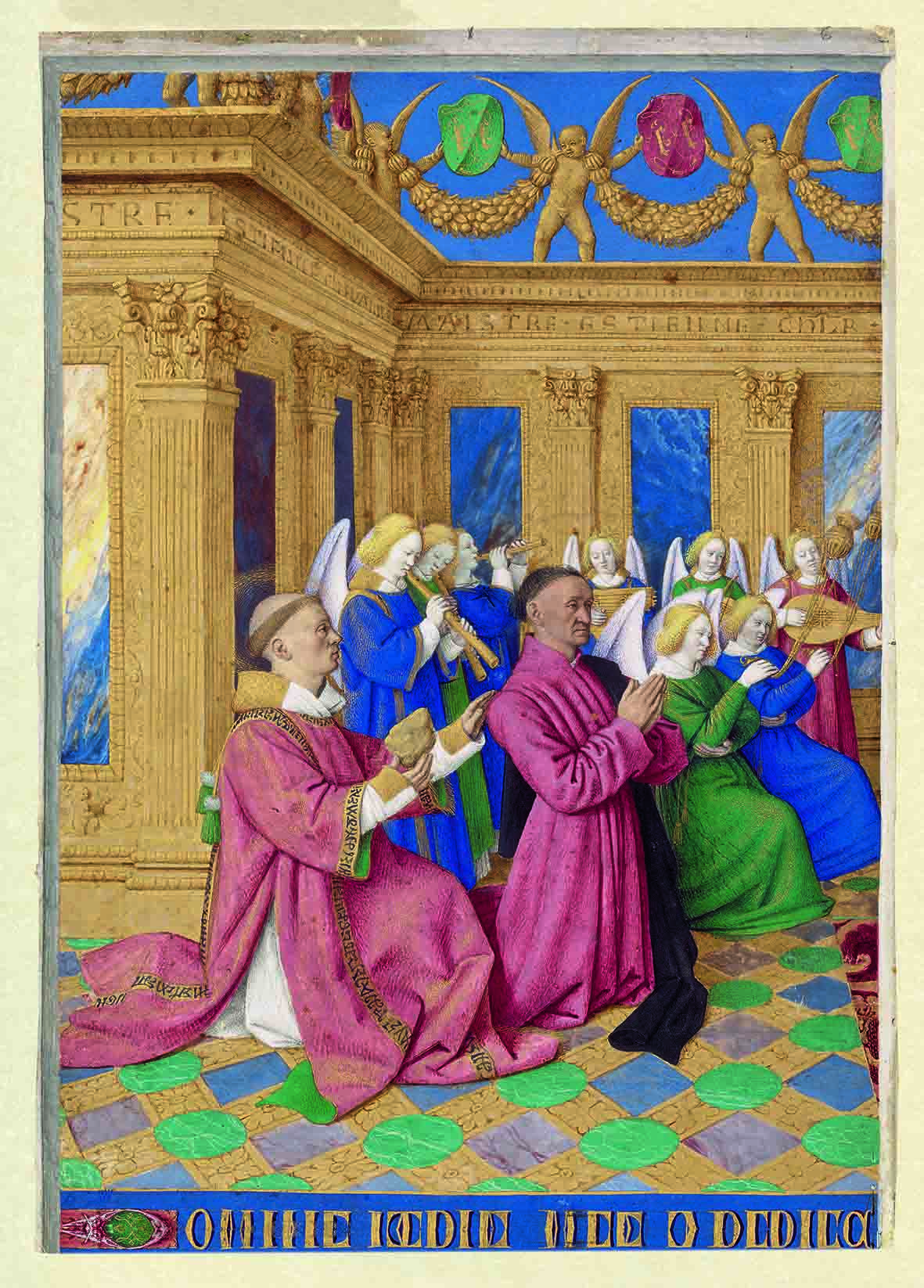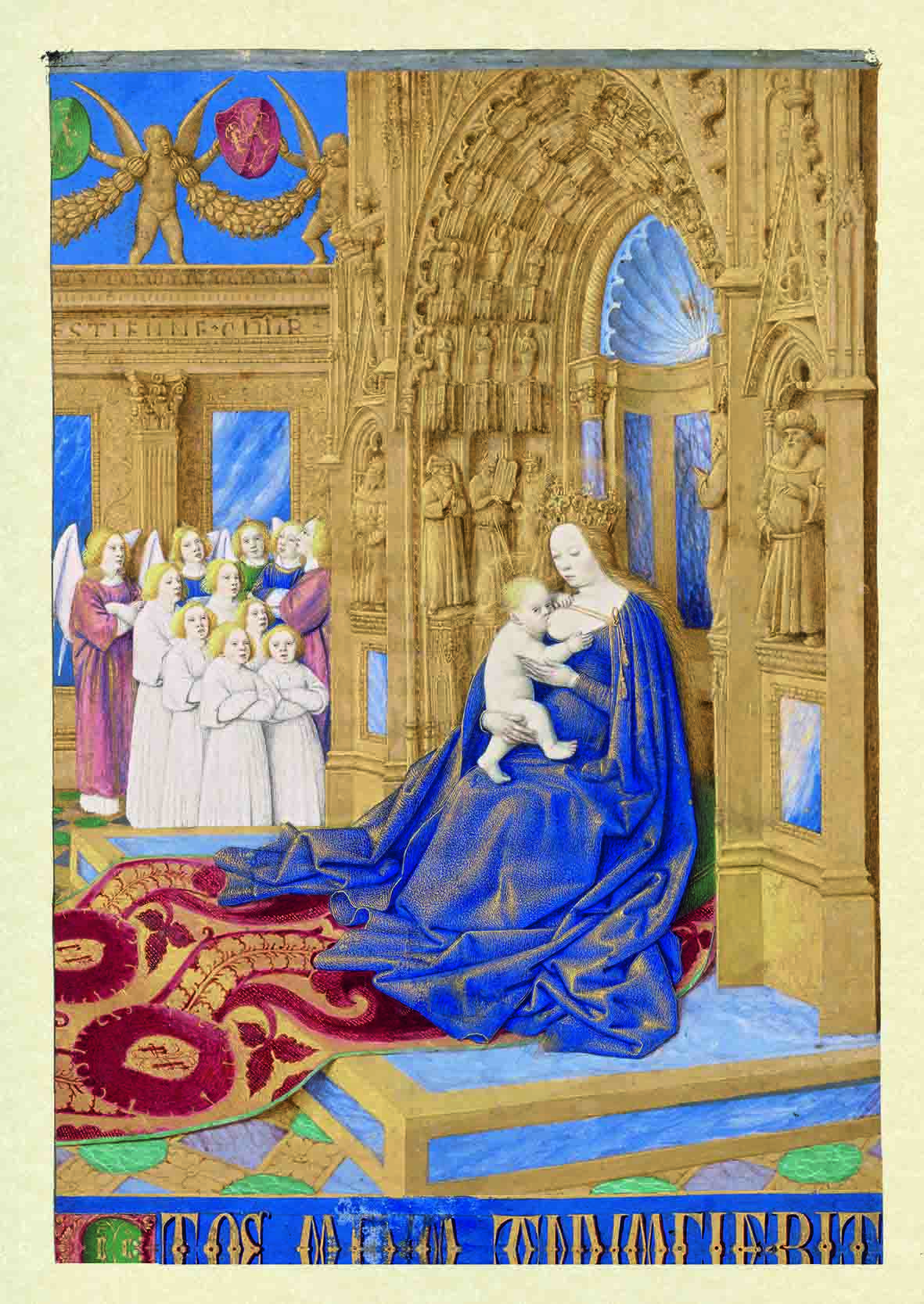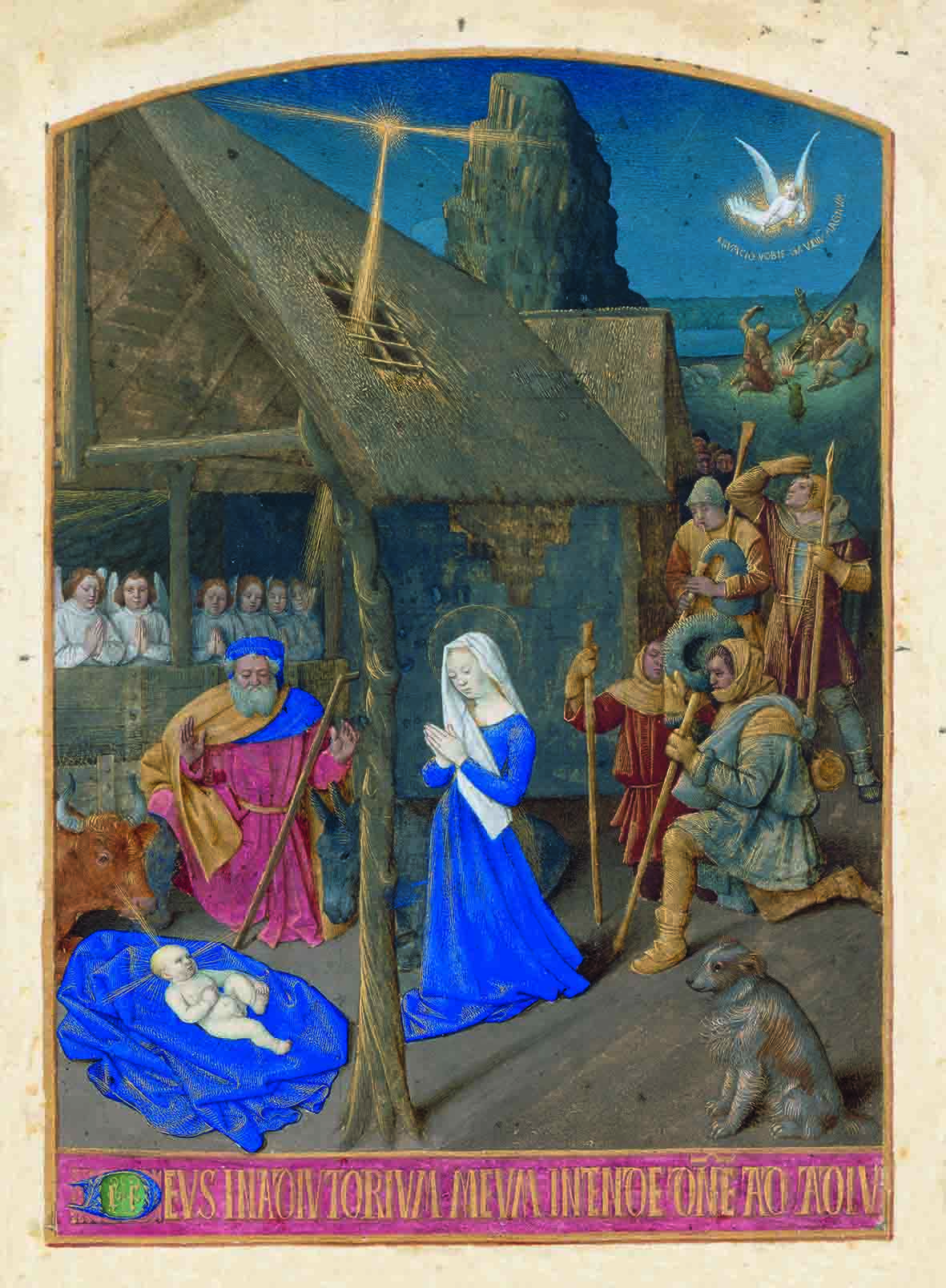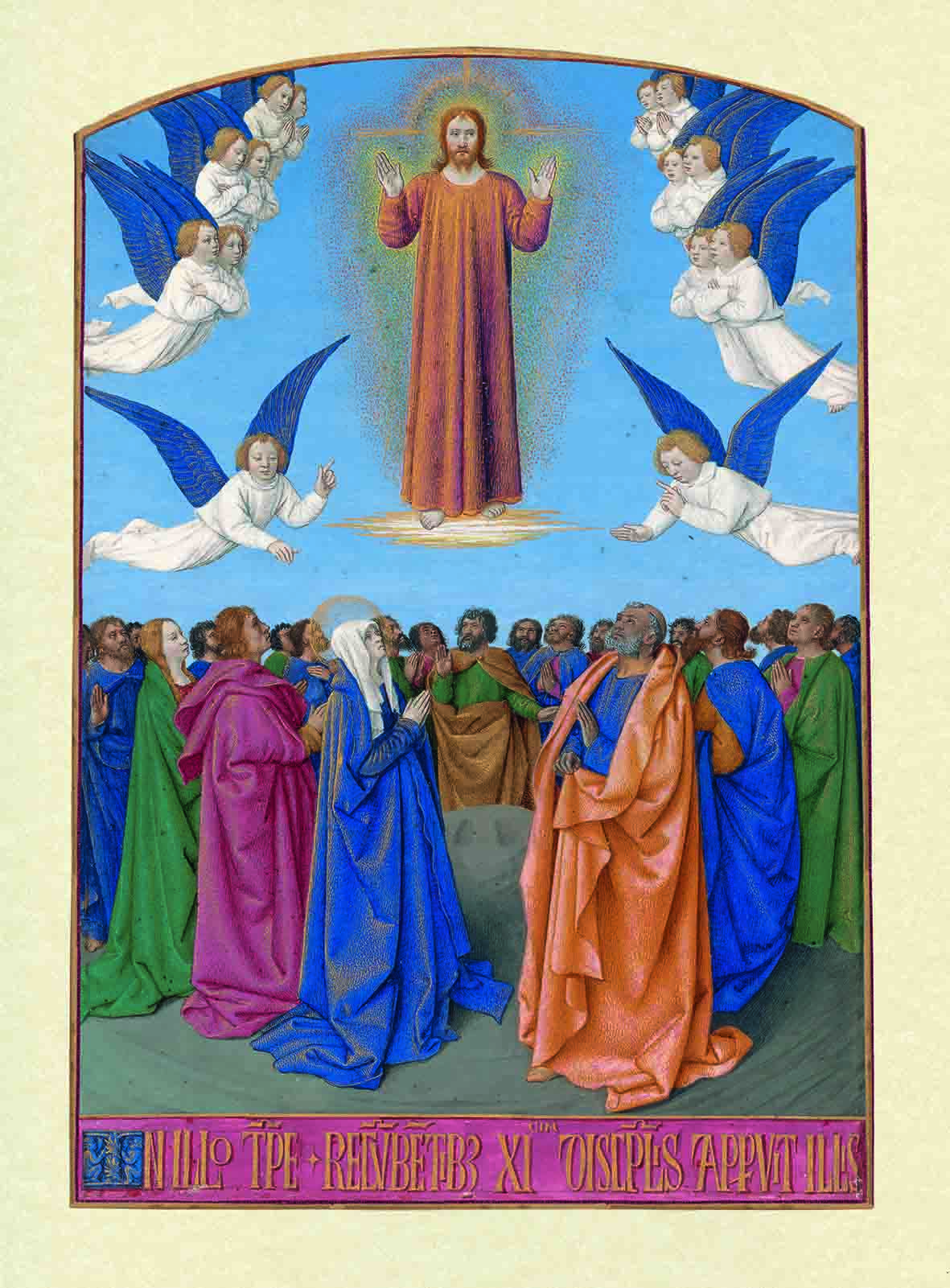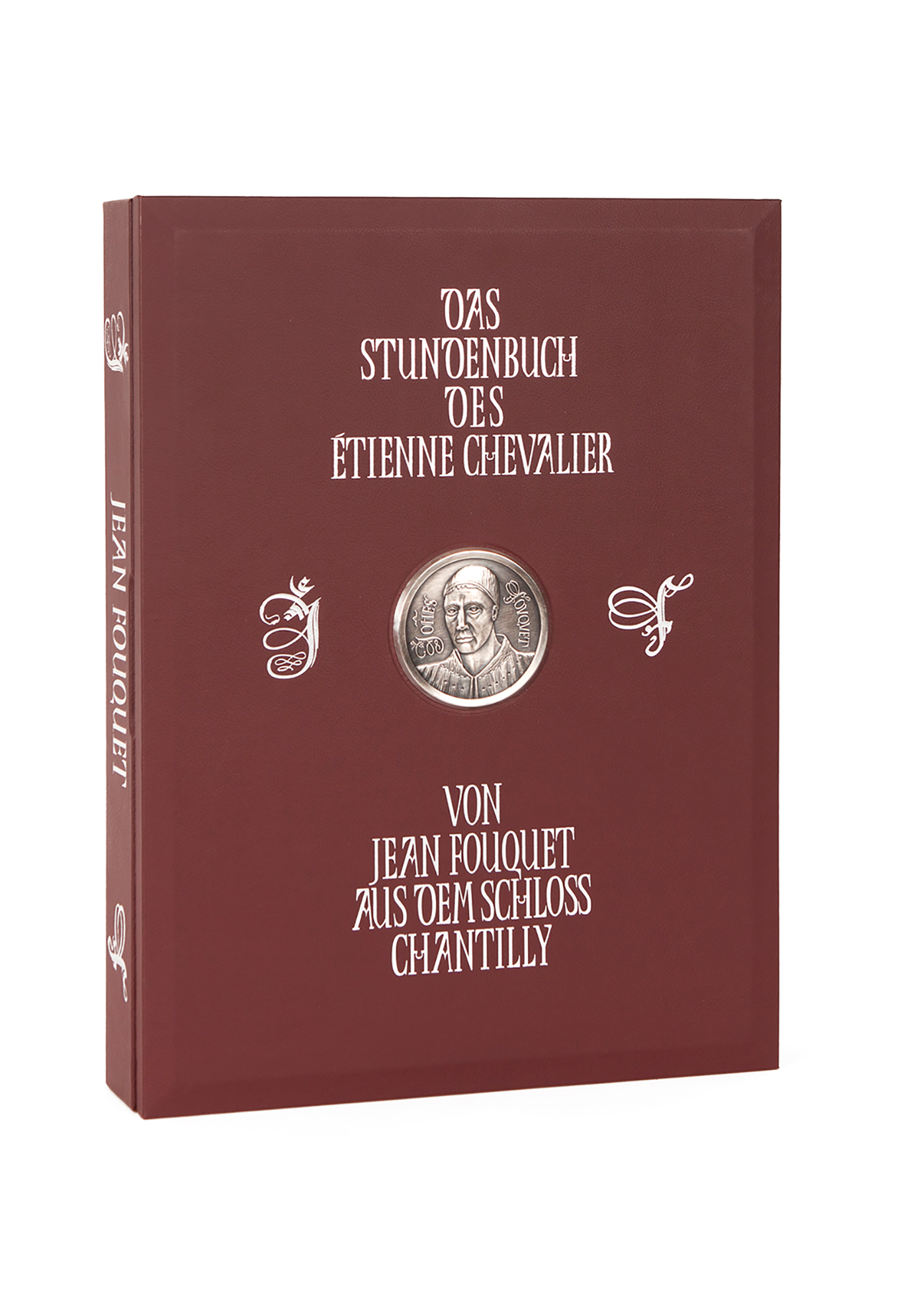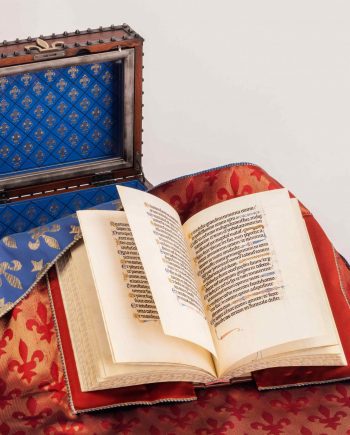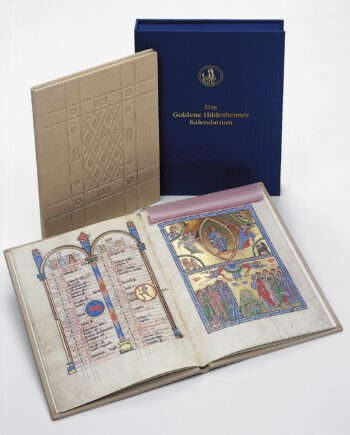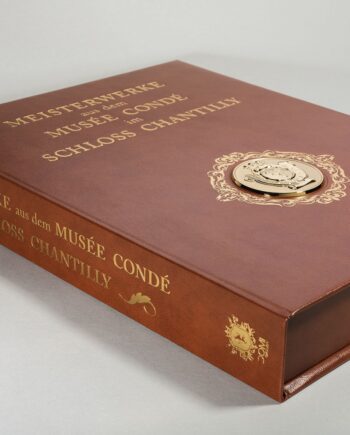Description
THE HISTORY OF A REDISCOVERY
The destiny of this famous manuscript remains obscure even today. What we know for sure, in contrast, is the person who commissioned this work: Étienne Chevalier, treasurer of France under the reign of King Charles VII (1422-1461). One may assume that the masterpiece remained in the family until the last descendant of Étienne: Nicolas Chevalier, baron of Crissé (1562–1630).
Then, its trace vanishes and by the end of the 17th century the owner is already unknown; at that time the scholar and “antiquarian” Roger de Gaignières discovers the manuscript – which apparently remains intact – and reproduces two of the miniatures.
Probably it is the exceptionally high quality of the miniatures and their character that the manuscript falls victim to, because some time after de Gaignières the manuscript is dismembered. First, all the texts belonging to the miniatures were covered being uncertain the particular circumstances. However, we can reconstruct the remounting of the “images” on oak panels, since on some of the panels we can still find the label of the Parisian carpenter and frame maker Basset who worked at the end of the 18th century.
Therefore, a total of 40 miniatures are preserved under passe-partout and mounted on panels. In the turmoil of the French Revolution since 1789, this series ended up in the hands of the Belgian art dealer Peter Birmann from whom then again the banker Georg Brentano from Frankfurt purchased it in the first years of the 19th century – for a total amount of 5,000 Francs.
THE “HOMECOMING” TO FRANCE
The way back to France of the 40 “pictures” finally succeeded in 1891 when the scholar Émile Picot achieved, after lengthy negotiations, to purchase them on behalf of the Duke of Aumale (a great patron of the arts and also a French General and son of the “Citizen King” Louis Philippe). However, it cost him the considerable amount of 250,000 Francs to persuade Georg Brentano’s son, Ludwig, to sell.
Since then, the 40 “pictures” are exhibited in Château de Chantilly, in the Santuario, a special room adapted by the Duke for these works of art; and for two more highlights of his collection: a predella of Filipino Lippi and the Three Graces of Raphael.
UNITED AGAIN THANKS TO THE FACSIMILE EDITION
Other single folios that are attributable to the manuscript have been rediscovered bit by bit in several collections or at auctions.
However, their former whereabouts folios are unknown. Today these single folios are located in different libraries all over the world – only with this facsimile edition it has been possible to bring them together again.
THE LAST WITNESS OF THE LOST TEXT PAGES
In 1981, there were the last sensational news regarding our book of hours: the manuscript expert of Sotheby’s, Christopher de Hamel, identified two attached folios as the only witnesses of the original text pages of the Hours of Étienne Chevalier that were believed to be lost forever.
THE COMPOSITION OF THE MANUSCRIPT
For a long time, the cycle of miniatures from Chantilly was merely considered a sequence of images from the life of Christ complemented by scenes of the Old Testament, virtually a kind of legenda aurea. It was not before the 1970s when the systemic and reasoned approach of the miniatures in their overall context was developed scientifically. It was recognised that each miniature is closely related to the hymn text of the respective office. The discovery of the text bifolio in 1981 contributed significantly to carrying out a more exactly material reconstruction of the original state. The illustrated cycles of the three Offices – of Mary, the Passion and the Holy Ghost – are interwoven. This is also evident in the disruption of the traditional sequence, as the Visitation is arranged before the Annunciation, which in this case introduces the Office of the Holy Ghost. This is very rare and presents a unique feature to the Hours of Étienne Chevalier
A NEW CONCEPT OF MINIATURES
Each of the 47 miniatures is a world of its own. With his innovations, Fouquet demonstrates his sublime inspiration: the layout of the pages that proves his outstanding skills enabling him to reinterpret the scenes in an unprecedented way – some familiar scenes in the eyes of his contemporaries, and others rarely used. To the same extent, Fouquet introduces elements that are inspired by current events and the life of his time.
Due to their conception, the miniatures appear as monumental paintings; and still the delicately finished images fit in the golden frames that are richly decorated with floral elements. Fouquet succeeded in getting the most out of the limited space in order to make just the statement that had already been conceived by his artistic eye; he also did this by using the space reserved for the initials and the first lines of text. That way, the texts are included in signs in the trompe-l’oeil style, or red and blue ribbons at the bottom of the miniature.
PATRON AND MASTER
Just after returning from his cultural journey to Rome (and probably also Florence), Fouquet instantly attracted the attention of the important patron of the arts and treasurer of France, Étienne Chevalier: his painting combined two of the most important European art movements – the Flemish and the Italian – towards an unprecedented modernity and expressiveness. Without any doubt, Jean Fouquet was one of the greatest illuminators in the history of art. His book of hours for Étienne Chevalier proves this fact in every single of the 47 miniatures.
THE COMMISSIONER AND PATRON: ÉTIENNE CHEVALIER
Étienne Chevalier was born around 1410 as the son of a secretary in Melun into a noble French family. In 1443, Étienne became a notary and a royal secretary of Charles VII as well as tax auditor of the administrative bodies of Languedoil-Languedoc and Outre-Seine. In 1446, he married the daughter of Dreux Budé, Catherine, and had a son and two daughters with her. The year 1452 was a fateful year for him: his wife Catherine died on August 24th; previously, on March 20th, Étienne had been appointed treasurer of France and consequently chief administrator of the public finances of France. He also held this high position at Court under the successor and son of Charles, Louis XI.
ARTIST OF THE CENTURY:
JEAN FOUQUETT
Jean Fouquet was probably born around 1420 in Tours. Very little is known about his early years. He possibly spent his period of apprenticeship with the so-called Jouvenel Master based in Nantes, whose works once were considered early works of Fouquet. Between 1445 and 1447, Fouquet travelled through Italy, and in Rome he made the acquaintance of Fra Angelico, Filarete and other Renaissance artists of the Quattrocento whose influences become visible in his later paintings. Since the 1450s, he served Charles VII and later Louis XI whose court painter he became in 1475. His customers include, besides Étienne, other high officials of France, like the chancellor Guillaume Jouvenel des Ursins.
THE DOCUMENTATION
You can easily convince yourself of the traditional quality created by Müller & Schindler: Order your copy of the documentation of the Facsimile Edition today!
In total, three original facsimile folios including a detailed description will give you an understanding of the masterpiece of Jean Fouquet – in all its bright colours and the masterly symbiosis of the European Art. A richly illustrated information brochure gives you an insight into the world of Jean Fouquet, and traces the winding paths of the manuscript up to the present day.




